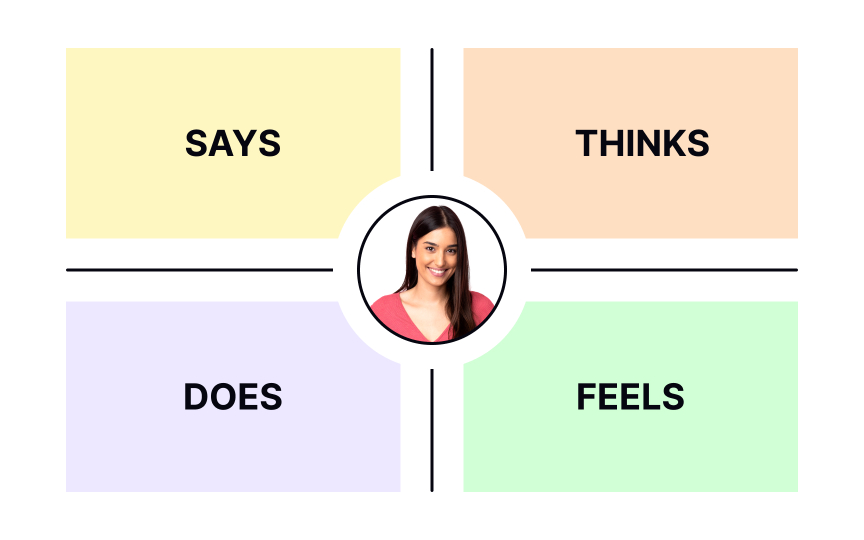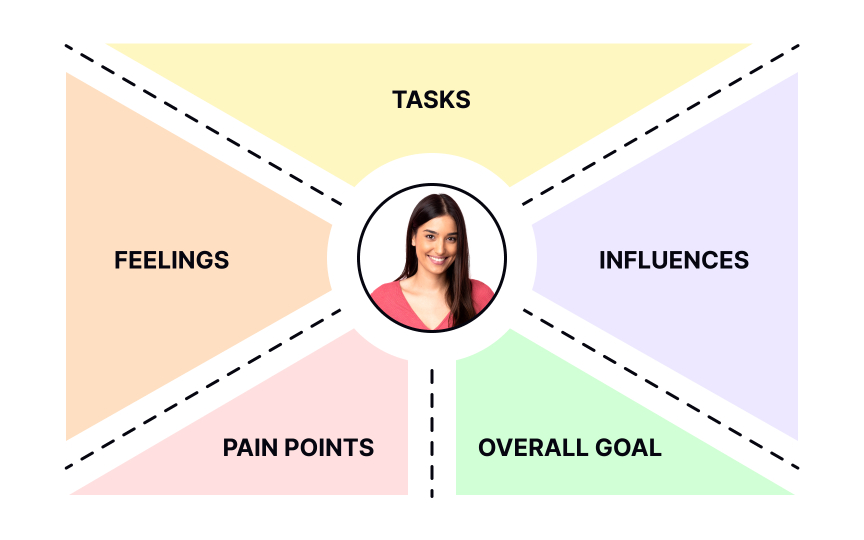Other empathy map formats
4-quadrant empathy maps are useful during the initial analysis. However, this isn't the only possible format. If you need more detailing or have unique needs, adapt the map by including additional quadrants like Goals, Pains, and Gains.
At later stages — for example, for brainstorming sessions focused on UX design — you might find Paul Boag's empathy map format a better option.
The map contains a different set of categories:
- Feelings: How does the user feel about the experience? What matters to them?
- Tasks: What tasks are users trying to complete?
- Influences: What people, things, or places influence how the user acts?
- Pain points: What pain points might the user be experiencing that they hope to overcome? What are their fears, frustrations, and anxieties?
- Goals: What is the user's ultimate goal? What are they trying to achieve?[1]
References
- Adapting empathy maps for UX design | Paul Boag - User Experience Advice


